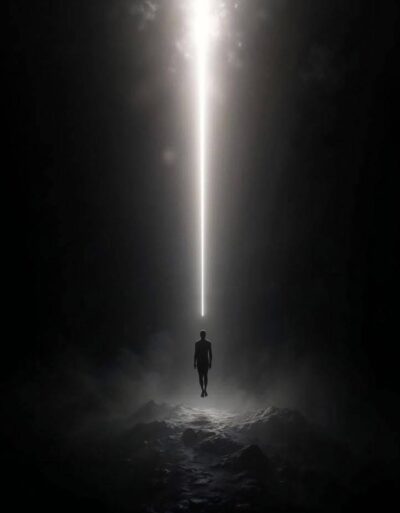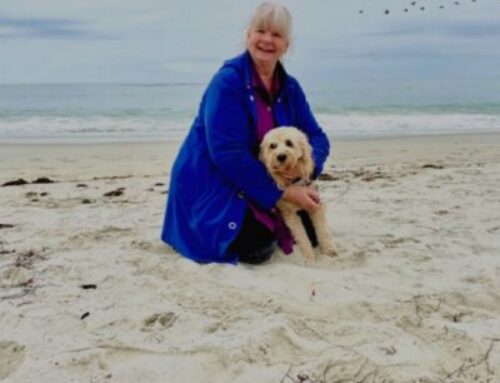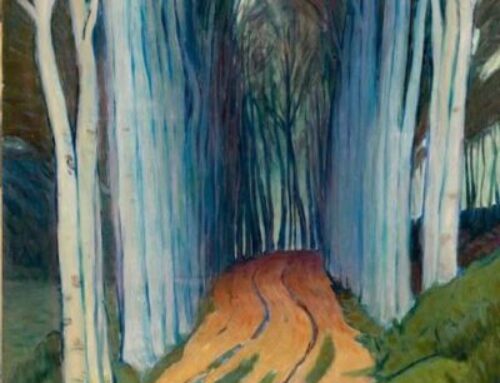From ages 11 to 17, while living with my father and stepmother, faith was rarely spoken of in our home.
George and I had been baptized Episcopalian; my father, though raised in an Italian Catholic family, had long since abandoned belief. During the years we lived with our grandparents, church and confession every Sunday were simply part of life. My stepmother, also raised Catholic, never went to church at all. Their two sons were never baptized, and I was never sure about my stepsister. Though my father declared himself an atheist, he still permitted me to attend services and even spend summers at Bible school.
Yet when I once asked him about the stories I was learning there, he answered gently but firmly, ‘I shouldn’t take them too seriously.’
I’ve always been drawn to exploring the diversity that surrounds me. Religion, in particular, has offered countless paths and traditions to discover.
I noticed early on how symbols often shift from their original meaning—Christmas trees, for instance, carry little connection to Christ.
While Easter honors the resurrection of Jesus, the holiday is more often celebrated through the charm of a cuddly, storybook bunny.
I’ve long reflected on my own beliefs and philosophies—wondering where they began, how they took shape, and whether they hold any actual merit.
Over time, I realized I had pieced together a belief system of my own making, one I continue to examine and question. Some of my beliefs don’t always withstand logic, yet they linger in quiet, persistent ways. Even now, I catch myself hesitating before walking under a ladder, as if some unseen thread still ties me to old warnings.
I know reason dismisses it, but superstition has a curious way of outlasting reason.
Perhaps it’s because these small rituals—tossing salt over the shoulder, avoiding broken mirrors, knocking on wood—offer us a sense of control in a world that often feels uncertain.
They remind me that even when we know better, we sometimes cling to the comfort of ancient habits, half-believing that luck, fate, or the universe might still be listening.
Most of us were raised with more superstitions than we probably recognize.
Over time, we either dismiss them as harmless folklore or allow them to take root, reshaping them into “beliefs” that feel more legitimate than superstition by name.
As a child, I was relentless in my need for proof, which often tested my parents’ patience. While my siblings absorbed what they were told without resistance, I questioned everything. Even now, I find myself unsettled by the ways adults can exploit children’s openness and trust, shaping their beliefs before they’ve had the chance to think for themselves.
The use of fear to enforce compliance is hardly a new idea—it’s woven into history and scripture alike.
Yet such tactics overlook one essential truth: fear may silence us for a time, but it underestimates the depth of our capacity to reason.
Superstitions rarely seem to fade; instead, they are passed down quietly through generations, woven into the fabric of everyday life.
We still treat a four-leaf clover, a rabbit’s foot, or a horseshoe as tokens of luck, repeating the same gestures our grandparents once did. Even now, people hesitate to open an umbrella indoors or wonder if a ringing in the left ear means someone is speaking ill of them. An itching palm is said to herald money, while an itching foot suggests travel lies ahead.
These small rituals persist not because they hold logic, but because they carry the weight of tradition—remnants of a cultural language that continues to shape how we make sense of chance and fortune.
In time, we let go of childhood fears—that watermelon seeds might take root in our stomachs, or that the Tooth Fairy and Santa Claus are real.
But superstition doesn’t vanish; it adapts.
Even today, most skyscrapers quietly omit a 13th floor, and many of us still make a wish on a shooting star or close our eyes before blowing out birthday candles. The forms may change, but the impulse remains—a lingering need to weave mystery and meaning into the ordinary.
Do we assign a reason to whatever we don’t understand?
It seems almost instinctive.
Throughout history, when confronted with the mysteries of life—the stars in the sky, the rumble of thunder, the cycle of seasons—human beings have reached for stories, symbols, and explanations to make sense of what lay beyond their grasp.
Ancient myths sought to explain natural disasters, illness, and fortune; gods and spirits were invoked to account for the unpredictable events.
Even today, in a world saturated with science and data, the impulse lingers. We still search for meaning in coincidence, wonder if fate plays a hand in our struggles, or look for signs in events that defy easy explanation.
This tendency is not mere ignorance; it reflects a more profound human need for order, for narrative, for reassurance that the world is not entirely random.
By assigning reasons—even imperfect ones—we create a framework that allows us to live with uncertainty.
Perhaps this is less about superstition and more about survival. To seek meaning in the unexplainable is to remind ourselves that we are part of something larger, and that mystery itself has a place in the human story.
My conclusion is that truth is not an absolute but a construct—something sustained by our willingness to accept it.
What we call “truth” gains its power not from being universally provable, but from our collective decision to treat it as real.
In this sense, belief itself becomes the foundation upon which truth is built.








Leave A Comment
You must be logged in to post a comment.